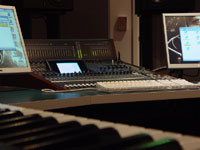| Electronic and Digital Aesthetics - MEFT3102 |
|
||||||||||||||||||||||||||||||||||||||||

Description Investigates the role of the senses in the way that people engage with electronic and digital media in a variety of contexts, including electronic and digital art, everyday and domestic media technologies, and popular cultural uses such as electronic music, computer games and digital image technologies. Considers how the traditional relation of aesthetics to culture might be changing as the result of electronic and digital media technologies.
Learning Outcomes By the end of the course, students will have:
Assessment
|
|||||||||||||||||||||||||||||||||||||||||

| Contacts | Library | myUNSW | WebCT |